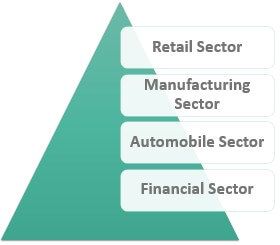Table Of Contents
Full Form of EDI (Electronic Data Interchange)
The full form of EDI is Electronic Data Interchange. It is a digital transfer of information or documents, such as invoices, purchase orders, bills of exchange, shipping notices, etc., in an electronic format (soft copy) between sellers and buyers. It also allows an entity to virtually communicate with other entities (national and international) anytime and anywhere, irrespective of the mismatching time zones.

How Does it Work?
- An EDI system stores the company's full information. It facilitates trading between a buyer and a seller by considering data like special pricing, shipping addresses, etc. The details about inventory levels, re-order, invoicing, purchasing, billing, etc., are all stored in an EDI system.
- EDI even uses standard data to ensure that the buyer’s requests and requirements are in sync with the customers. The orders are successfully placed, and the transaction is executed without interruptions.
- This software uses relevant data, and when a purchase request is received from the buyer, the data is transformed to fit the suppliers’ system. The valuable information is then used to generate the documents.
Example
Mike, a purchasing manager of ABC stores, is in charge of preparing orders for the store. He prepares an order and translates the same into electronic documents (EDI 850). After the formatting of EDI 850 is done, the same is virtually transmitted to XYZ (supplier). XYZ receives the electronic data interchange 850 orders from ABC stores and processes the purchasing order.
Types

- Direct EDI - This is also regarded as a point-to-point electronic data interchange and helps build an individual connection with each trading partner. It is mostly used between suppliers with a huge customer base and many business transactions.
- EDI via VAN - This private network enables the interchange of electronic documents between two trading partners.
- EDI via AS2 - This enables secure data transmission via the internet.
- Web EDI - This uses a standard internet browser for conducting EDI.
- Mobile EDI - This is not much in use due to mobile devices or their underlying security issues.
- EDI Outsourcing - This is also regarded as Managed Services, allowing organizations to use external resources to manage their EDI environment daily.
Standards
The two widely used electronic data interchange standards are American National Standards Institute/Accredited Standards Committee X12 (ANSI ASC X12) – generic, and EDI for Administration, Commerce, and Transport (EDIFACT) – generic international.
Components

- Standard Document Format - It is a standard format to which both the trading parties agree, and it does not require complicated software or hardware for accessing information.
- Translator and Mapper - The translator is used to convert raw data into more meaningful information, while the mapper is used to create conversion specifications.
- Communication Software - It is used to transmit data and convert business documents, such as invoices, purchase orders, etc., into a standard document format.
- Communication Network - It offers a direct link between the buyer and the seller, who agreed to exchange business documents through electronic data interchange.
Applications

- Retail Sector - It offers a structured way of maintaining and replenishing goods stocked at a retail outlet.
- Manufacturing Sector - It offers a systematic way of in-time manufacturing and planning concerning material requirements.
- Automobile Sector - It helps the automobile industry to keep its customers aware of the ongoing product and pricing details throughout the purchase cycle.
- Financial Sector - It helps the financial sector replace labor-intensive activities of collecting and disbursing payments through an electronic system.
Benefits
- Real-Time Processing - It enables users to experience real-time business information and transaction processing. This speeds up the business cycle up to 61% and allows the companies to execute a transaction in a matter of a few minutes instead of a pro-longer duration, which could be days, weeks, or months.
- Fewer Chances of Stock-Out, Cancellations, and Re-Worked Orders - It enables the companies to process business documents in real-time and with full accuracy. Thus, leading to fewer chances of stock-out, cancellations, and reworked orders.
- Lower Costs - This helps minimize the costs of traveling, documentation, printing, storage, filing, reproduction, postage, etc.
- Strengthens Relationships Between Trading Partners - EDI applications shorten delivery time and bring about a lot of transparency in transactions. This helps the suppliers gain the buyers' trust and build profound relationships with them in a matter of short time.
Limitations
- Expensive - These applications are expensive. The installation of EDI applications in an organization is very complicated and costly. This is why most organizations highly disregard the installation of EDI applications into their systems despite the advantages it has to provide.
- Network Complexity - Another disadvantage of installing EDI applications is that it generates the requirement to have extensive telecommunications capability. This may not be a problematic scenario for well-doing companies, but it becomes a huge problem for small and medium-sized companies.
Conclusion
- This is the short form used for electronic data interchange. The key advantages of installing an EDI application are that it is highly adaptable, simplifies processes, minimizes costs, brings transparency, coordinates processes, etc.
- However, the installation of EDI could turn out to be expensive for small and medium-scale companies. Companies that are willing to install EDI applications will need to make a huge investment in their computer networks. Companies that cannot afford to make such an investment will only leave with a choice of relying upon intermittent point-to-point modem communications.
